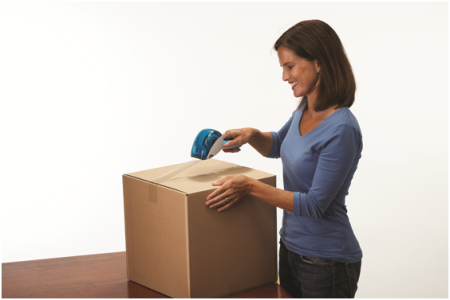
By Guest blogger Jay F. Perdue
We are grateful that a real expert answers the question today about which is better for sealing packages, paper or plastic tape. Jay has 25 years of experience delivering packages for UPS and has seen more packages than just about anyone. Here is his guest post.
Will that be paper or plastic Sir?
When it comes to shipping packages you have two choices for sealing your box: Paper tape or plastic tape. Most small shippers don’t even know that there is more than one option and use plastic tape. The larger shippers sometimes use the reinforced 3″ water activated paper tape using a tape dispenser. You can set the dispenser to give you a specific length of tape. Then, pull the lever and it gives you a perfect piece of tape every time. Sounds great, and it is fast and accurate.
DON”T USE IT!
After delivering packages for UPS for 25 years I have seen what happens to the packages that are sealed with paper tape and it is not pretty. I end up resealing at least 50% of these packages with plastic tape to keep them closed because the paper tape is either broken or not sticking anymore.
- Paper tape will not stick to plastic tape if you are recycling a box with old plastic tape still on it
- Paper tape does not do well in the extreme heat of summer
- Paper tape is not flexible like plastic tape and will break when during the handling process
My recommendation is to use plastic tape with a hand tape gun. Even the cheap tape at about $1.50 a roll is a lot better than paper tape and the tape guns are cheap also running about $15 or so. It is about as fast as a paper tape dispenser and just as cheap.
Every sale you make is important to you and equally important to your customer. If you take special care to use the right size box and pack your item properly make sure you use plastic tape to keep it sealed tight.
Note from Mark: Jay has moved to Minneapolis/St Paul. If anyone needs a real shipping expert in the logistics field, Jay is available. Here is his LinkedIn profile.



 Posted by mtaylortec
Posted by mtaylortec 









